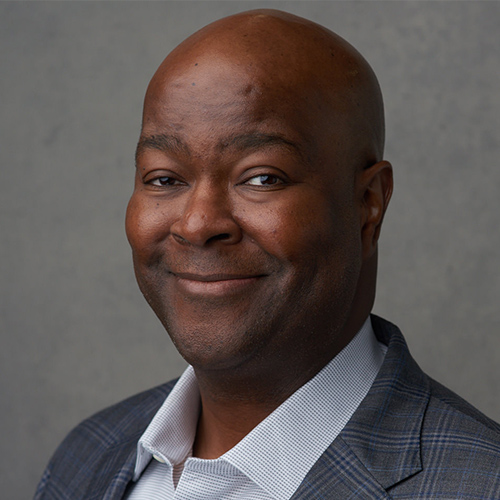7 minutes
These include finding the connection, good communication, and making it a priority.
This is an excerpt from the foreword to “CUES Guide to Effective Mentorships,” a benefit of all levels of 2019 CUES membership.
In my life I’ve been part of several mentorships. Whether I was the mentor or the mentee, I have found there are seven key requirements for success in these exchanges.
1) There has to be a connection between the mentor and mentee.
That connection can come from either personal or professional experiences, but it has to be felt by both parties. Let me describe how I form such connections. I am a huge fan of music—specifically, I love jazz—and I have found a common love of music to be a great way to start conversations with others. Because my musical tastes are so diverse, I’ve been able to make connections with people as both a mentor and a mentee. And because a love of music spans the ages, it’s proven to be an effective way to bridge generational gaps.
When I was a mentee, my love of jazz and classical music was a way to establish a connection with people who were more mature than me. If they loved jazz or classical music as well, it was something we could have a conversation about, and it often turned into a foundation we could use to build a relationship. Now that I am a mentor and interacting with mentees, the flip side is that I am also a big fan of modern music—so I use hip hop and indie rock as a way to connect with younger people.
Music is just one way you can establish a connection. Ask yourself: What is a topic of interest that will allow me to relate to a potential mentor or mentee? Some people may use sports. Others might find a bond through movies or the shared experience of being a parent. Once you find this connection, the relationship can grow from there. You also can relate your common bond to business discussions.
Talking to one of my mentees, for example, I asked him: “What’s your jazz?” It was my way of exploring with him: What is your passion? What makes you tick? What is that special thing inside of you that you want to share with the world? The same inner drive that can make someone a successful jazz musician can lead someone to achieve success as a credit union executive.
2) You have to get to know one another.
I think back to the most successful mentor/mentee relationships I’ve had. When we started out, it wasn’t about giving or receiving advice. It was about trying to get to know each other better. That’s what creates understanding and allows you to relate to one another. It starts with the common connection, but also applies to sharing basic information about each other. Are you married? What is your spouse’s name? What are the names of your children? Do you have pets? What do you like to do in your spare time? All of that information makes the relationship more personable and increases the connections that are so important to getting the relationship off on the right foot.
It’s a lot easier to take advice and guidance from someone you know than someone you don’t know. If as a mentor, you start trying immediately to help your mentee by dispensing advice on a situation that you know nothing about, or if you’re a mentee looking for a mentor to give you life-changing wisdom on Day 1, then you’re both likely to walk away disappointed. The longest-standing and most effective relationships I’ve had, in the beginning, were focused on the simple task of getting to know one another.
3) There has to be a two-way flow of benefits and value.
Mentees get value in a mentorship from the mentor’s advice and guidance. However, in the best mentoring relationships, mentors get value as well. In their roles as mentors, they’re able to hone their leadership skills and broaden their perspective through exposure to the ideas and observations of their mentees. This is particularly valuable in a cross-generational mentorship, in which the mentor gains insights into the mindset of young professionals.
I meet and interact with a lot of young professionals in my career. I find it helpful to mentor these young people because that keeps me in tune with what’s going on with them, what’s on their minds and the challenges that they face. It’s valuable to bounce ideas off each other—to discuss business opportunities and gain new perspectives from their distinct generational position. Often the mentee is able to view a situation without all the baggage or complexity that the mentor may bring to it.
If there are certain ways that the mentee can help you, you should express that up front or as they occur. For example, you may say, “I want to gain a better understanding of how millennials view financial services. If you can provide some insights as we go along, that would be helpful.”
4) There has to be good communication.
Communication is at the heart of the mentoring partnership. Both individuals need to have the ability to express themselves clearly and without reservation, and they also need to have the ability to listen.
Communication has been greatly enhanced by the technology we have today. If you are unable to be physically in the same space with your mentor or mentee, you can use Skype or other telecommunications to have a long-distance conversation. If the two of you have reached a certain comfort level, you can follow each other on social media platforms or make a connection on LinkedIn to gain additional insights into the other person’s background and how that person thinks. Leveraging the technology that’s available to you is one more way to fulfill the goal of getting to know each other better.
5) There has to be confidentiality, honesty and trust.
Confidentiality is a key component that gives both parties in the mentoring relationship the confidence to speak freely about what’s on their minds and to share their innermost thoughts about their career and vulnerabilities and what they believe is truly important in life. If I am your mentor, whatever you share with me stays with me. Confidentiality is built on trust—in knowing that the person to whom you are speaking wants what’s best for you. There also has to be honesty. Sharing honest perspectives, insight and feedback is critical, and so is having a safe place to do that in.
6) Both parties have to be committed.
A mentorship takes commitment. You have to spend time with each other, engage with each other, show genuine interest in the process and put forth energy to make it a success. If you don’t have the time to devote to the relationship—if you’re constantly rescheduling meetings or failing to follow up on tasks that you agreed to do—it diminishes the relationship and possibly renders it a waste of time for the other party.
Whatever you agree to do, make sure you deliver. If you say, “I’m going to do X, Y and Z by such-and-such date,” then do it. If you say, “I’m going to introduce you to this person who can be an excellent resource for you,” then arrange for the introduction. Honor your commitments, whether it be your time, doing the required follow-up or showing enthusiasm for the process. A mentorship is a relationship, and just like any other relationship, it will not work if you don’t make a commitment.
7) It has to be a priority.
I think it’s an obligation, as a leader, to be a mentor. Those who take on the role of mentor are helping to develop future talent and future leaders. You need to make the mentorship a priority by giving generously of your time, your energy and yourself.
John Pembroke is president/CEO of CUES. Since joining the organization in May 2013 as chief operating officer, he has helped launch a new direction in CUES’ strategy, branding and culture. Pembroke has more than 20 years of experience in branding and financial services. He holds an MBA from the University of Chicago’s Booth School of Business and is a member of the board of the Goodman Community Center, Madison, Wis.






